Figure shows a cylinder closed by a movable piston containing an ideal gas. The piston is quickly pushed down from position 2. The piston is held at position 2 until the gas is again at 0∘C and then is slowly raised back to position 1. Represent the whole operation on a P-V diagram. If 100 g of ice melts during the cycle, how much work is done on the gas?
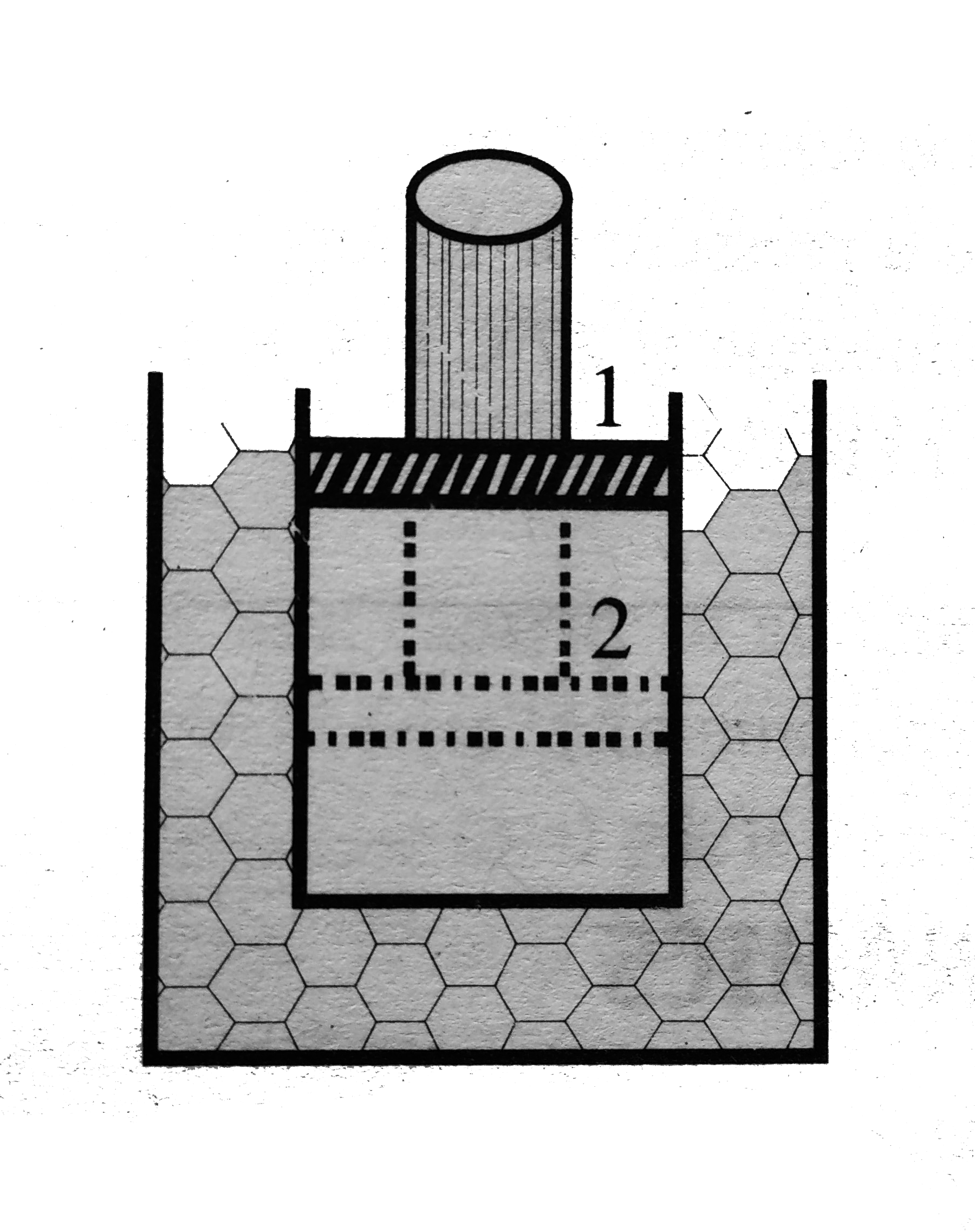
A quick process is genernally adiabatic and a show process isothermal. Since 100 g ice melts, heat given out by the systme (gas in the cylinder) is equal to the required laten heat.
∴ΔQ=−100×10−3×336×103
=−3360J
ΔU=0 (since it is a cyclic process)
But ΔQ=ΔU+ΔW (always)
∴−3360=ΔW
∴ Work done on the system =−ΔW=3360J
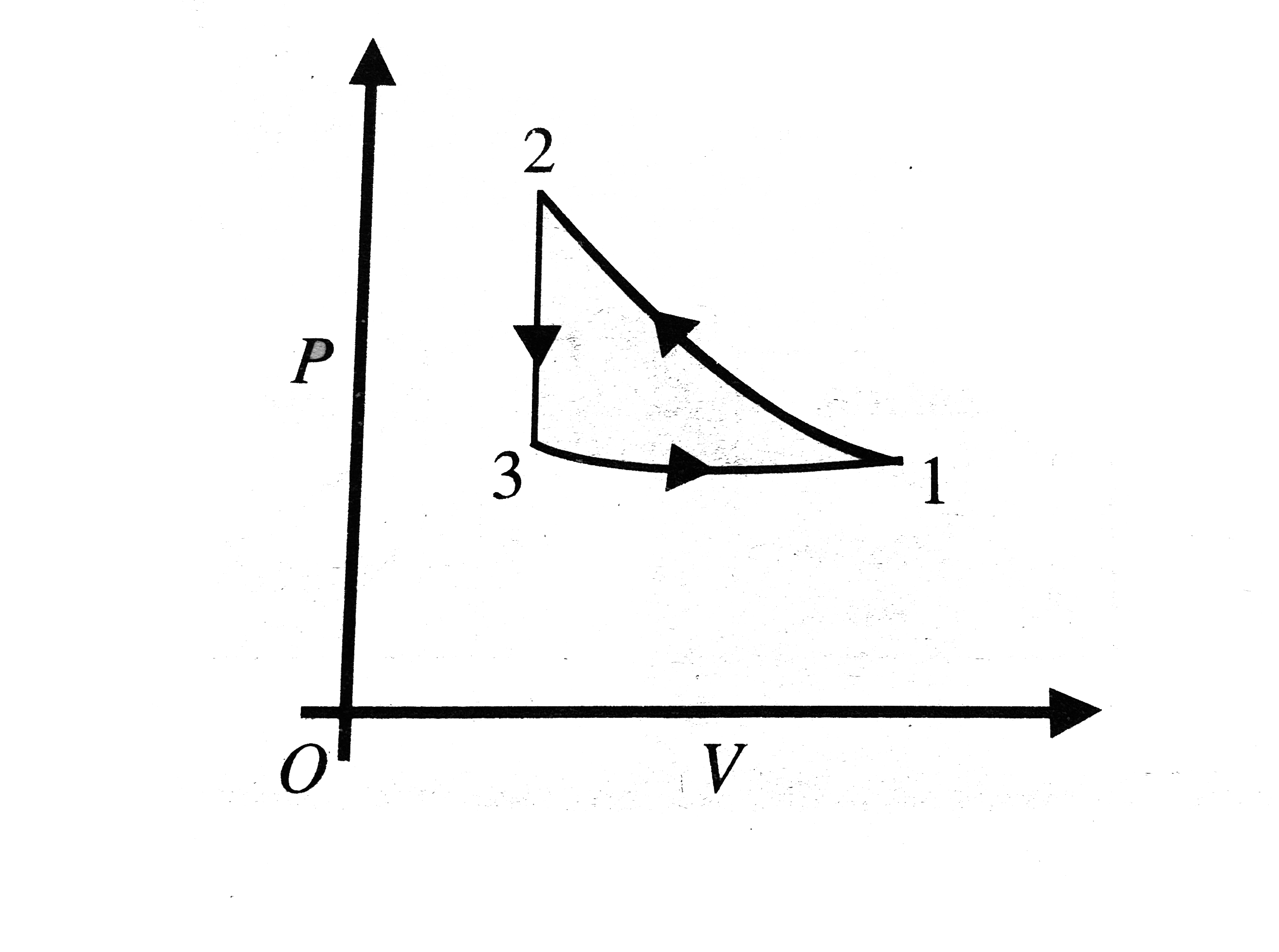
Topper's Solved these Questions
- KINETIC THEORY OF GASES AND FIRST LAW OF THERMODYNAMICSBOOK - CENGAGE PHYSICS ENGLISHCHAPTER - KINETIC THEORY OF GASES AND FIRST LAW OF THERMODYNAMICSEXERCISE - Solved Examples
14 Videos
- KINETIC THEORY OF GASES AND FIRST LAW OF THERMODYNAMICSBOOK - CENGAGE PHYSICS ENGLISHCHAPTER - KINETIC THEORY OF GASES AND FIRST LAW OF THERMODYNAMICSEXERCISE - Exercise 2.1
20 Videos
- KINETIC THEORY OF GASESBOOK - CENGAGE PHYSICS ENGLISHCHAPTER - KINETIC THEORY OF GASESEXERCISE - Compression
2 Videos
- LINEAR AND ANGULAR SIMPLE HARMONIC MOTIONBOOK - CENGAGE PHYSICS ENGLISHCHAPTER - LINEAR AND ANGULAR SIMPLE HARMONIC MOTIONEXERCISE - Single correct anwer type
14 Videos
Similar Questions
A cylinder containing an ideal gas ( see figure ) and closed by a movable pistong is submerged in an ice- water mixture. The pistone is quickly pushed down from position (1) to position (2)( process AB). The piston is held at position (2) until the gas is again at 0∘C ( processs BC). Then the pistone is slowly raised back to position (1) ( process CA)
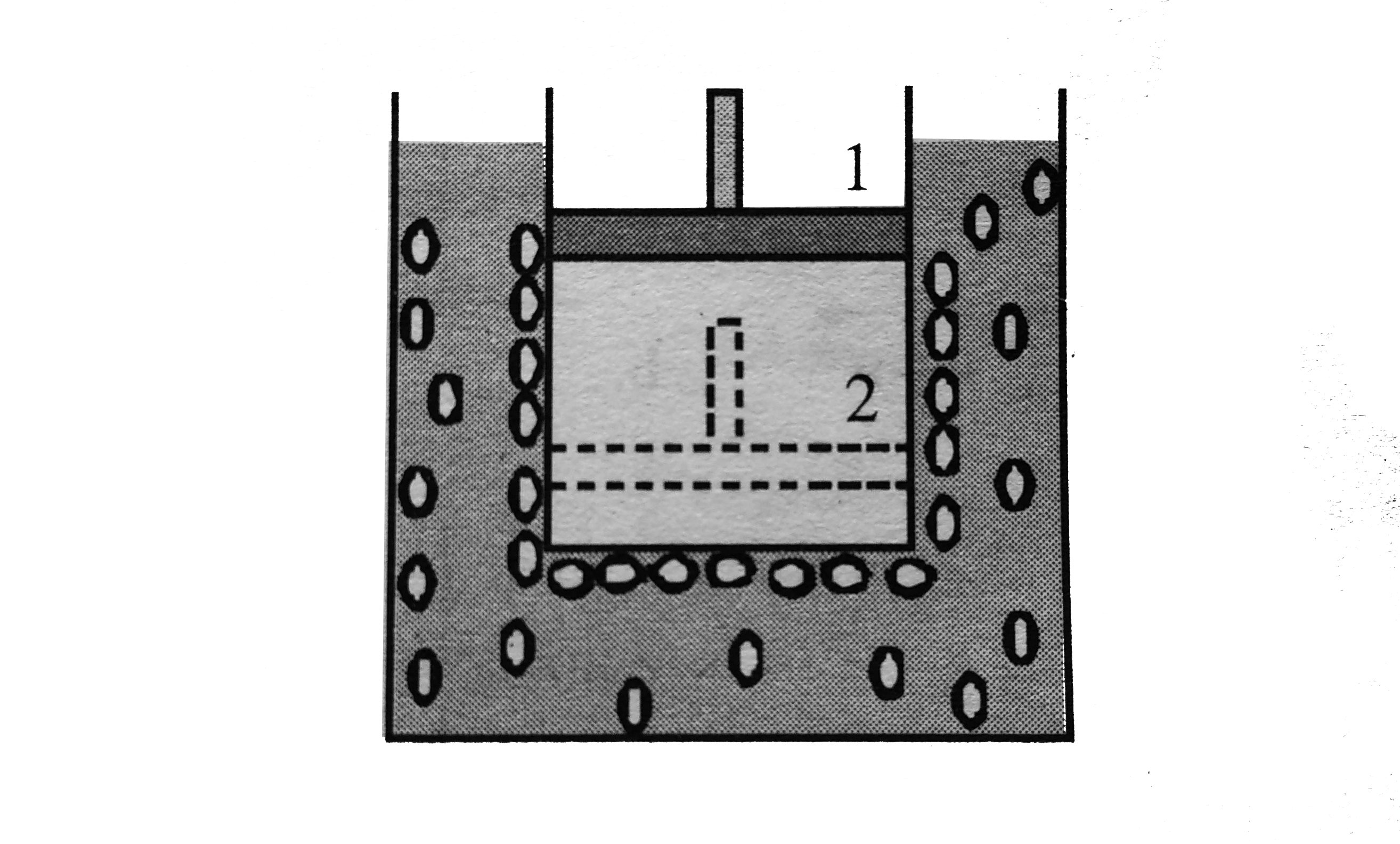
Which of the following P−V diagram will correctly represent the processes AB,BC and CA and the cycle ABCA?
View SolutionA cylinder containing an ideal gas ( see figure ) and closed by a movable pistong is submerged in an ice- water mixture. The pistone is quickly pushed down from position (1) to position (2)( process AB). The piston is held at position (2) until the gas is again at 0∘C ( processs BC). Then the pistone is slowly raised back to position (1) ( process CA)

Which of the following P−V diagram will correctly represent the processes AB,BC and CA and the cycle ABCA?
View Solution
Knowledge Check
A cylinder containing an ideal gas is in vertical position and has a piston of mass M that is able to move up or down without friction (figure). If the temperature is increased
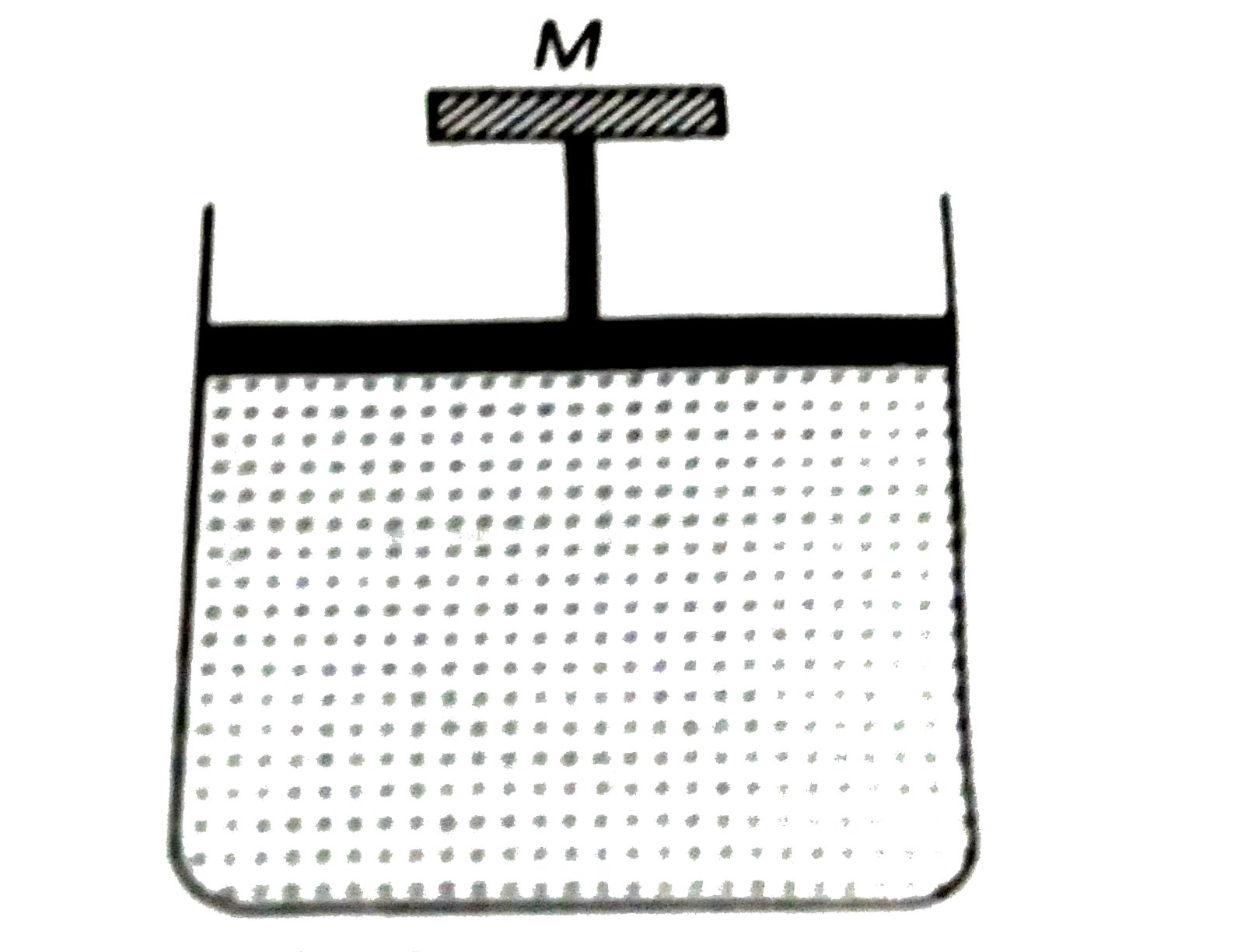 Aboth P and V of the gas will changeBonly P will increase according to Charle's law.CV will change but not PDP will change but not V
Aboth P and V of the gas will changeBonly P will increase according to Charle's law.CV will change but not PDP will change but not V
A cylinder containing an ideal gas is in vertical position and has a piston of mass M that is able to move up or down without friction (figure). If the temperature is increased

View SolutionA cylinder containing an ideal gas is in verticle postion and has a piston of mass M that is able to move up of down without friction. It the temperature is increased,
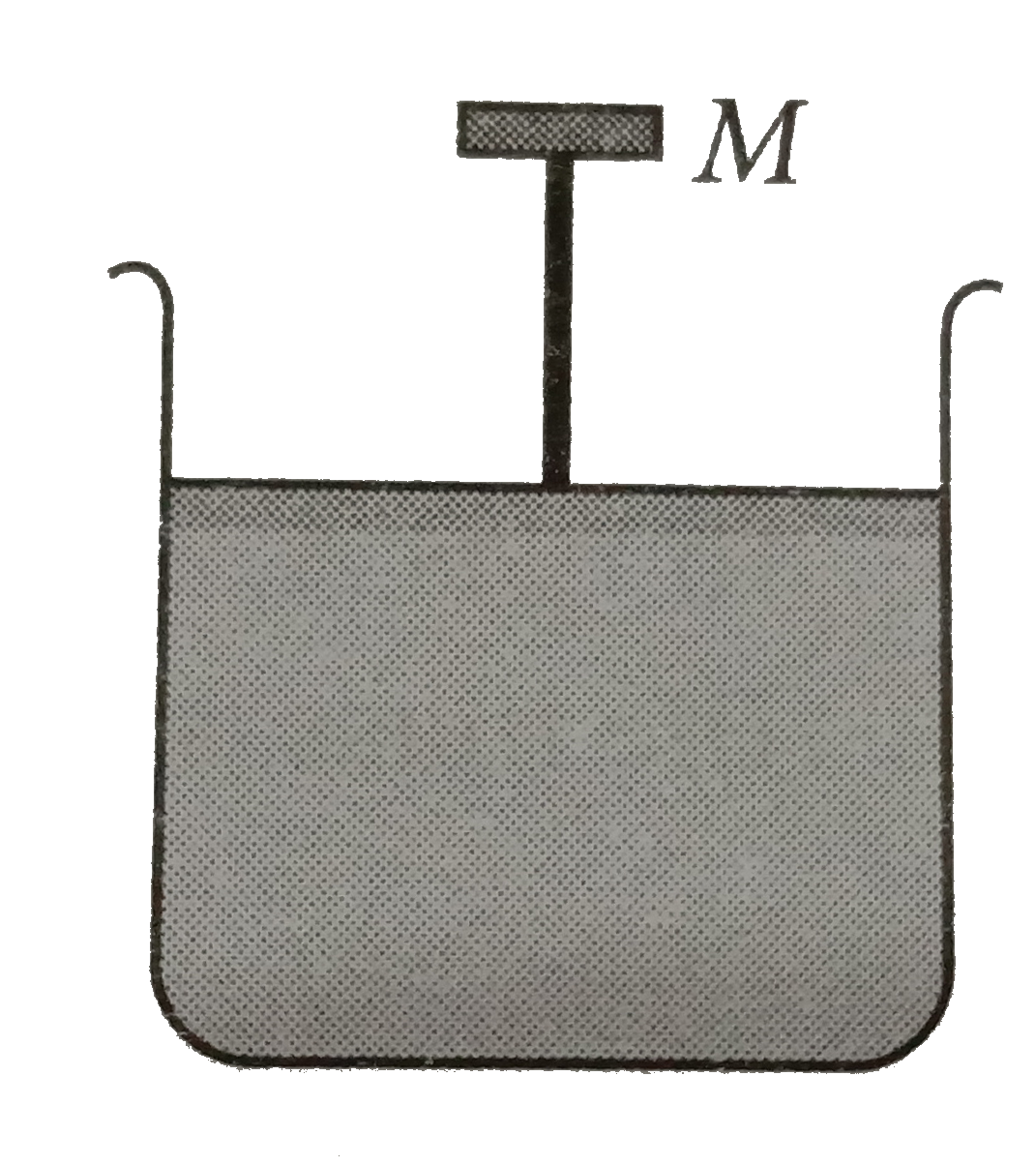
View SolutionA cylinder of ideal gas is closed by an 8kg movable piston of area 60cm2. The atmospheric pressure is 100kPa. When the gas is heated form 30∘C to 100∘C, the piston rises 20 cm. The piston is then fastened in the place and the gas is cooled back to 30∘C. If ΔQ1 is the heat added to the gas during heating and ΔQ2 is the heat lost during cooling, find the difference.
View SolutionA cylinder of ideal gas is closed by an 8kg movable piston of area 60cm2. The atmospheric pressure is 100kPa. When the gas is heated form 30∘C to 100∘C, the piston rises 20 cm. The piston is then fastened in the place and the gas is cooled back to 30∘C. If ΔQ1 is the heat added to the gas during heating and ΔQ2 is the heat lost during cooling, find the difference.
View SolutionA masslesss piston divides a closed thermallyy insulated cylinder into two equal parts. One part contains M = 28 g of nitrogen. At this temperature, one-third of molecules are dissociated into atoms and the other part is evacuated. The piston is released and the gas fills the whole volume of the cylinder at temperature T0. Then, the piston is slowly displaced back to its initial position. calculate the increases in internal energy of the gas. Neglect further dissociation of molecules during, the motion of the piston.
View SolutionA vertical hollow cylinder contains an ideal gas. The gas is enclosed by a 5kg movable piston with an area of cross-section 5×10−3m2. Now, the gas is heated slowly from 300K to 350K and the piston rises by 0.1m. The piston is now clamped at this position and the gas is cooled back to 300K. Fid the difference between the heat energy added during heating process and energy lost during the cooling process. (1atm pressire=105Nm−2]
View SolutionFigure shows an insulated cylinder of volume V containing monatomic gas in both the compartments. The pistone is diathermic. Initially the piston is kept fixed and the system is allowed to acquire a state of thermal equilibrium. The initial pressures and temperatures are as shown in the figure. Calculate

The heat that flows from RHS to LHS, Given T2>T1.
Now, the pin which was keeping the piston fixed is removed. and the piston is set free to move. The piston is allowed to slide slowly, such that of mechanical equilibrium is also achieved and T1P2>P1T2. Find.
View Solution
